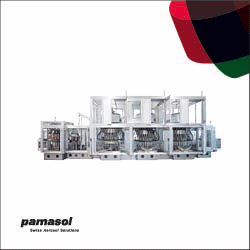Projecting Trade for the U.S.
Happy New Year from the Household & Commercial Products Association (HCPA). As 2025 begins, so do the terms for returning and newly elected Congress members, as well as the start of a second Trump Administration. We can expect many changes at both the Federal and State levels that will impact Industry. One area where we […]
Consumer Product Safety Commission, Agenda for 2025
Most people outside of certain regulated industries have never heard of the Consumer Product Safety Commission (CPSC). They may recognize that consumer products are regulated, but don’t know by who or the specific requirements that manufacturers and marketers have to meet in order for products to be available for sale. The Consumer Product Safety Act […]
CPSC’s proposal to address inhalant abuse
On July 31, the Consumer Product Safety Commission (CPSC or Commission) issued a notice of proposed rulemakingi to prohibit the sale of any aerosol duster that contains more than 18mg in any combination of HFC-152a and/or HFC-134a under the Federal Hazardous Substances Act (FHSA). This proposed rulemaking stems from a petitionii submitted in 2021 by […]
Keeping an eye on PFAS restrictions
Keeping up with the per- and polyfluoroalkyl substances (PFAS) regulatory landscape continues to be a daunting challenge for manufacturers and their supply chains. It’s been a rollercoaster trying to understand which chemicals are considered PFAS due to the lack of a standardized scientific definition of this class of substances and the different statutory interpretations used […]
Country of origin claims
The aerosol products industry [sees] … more than 90%i of aerosol products manufactured and sold in the U.S. However, manufacturing an aerosol product in a U.S. facility is not enough to justify an unqualified claim of “Made in USA.” In 2021, the U.S. Federal Trade Commission (FTC), which prevents unfairness in the marketplace and investigates […]
Selecting the right test
There are a number of codes and regulations that can apply to the flammability classification of aerosol products in the U.S. While this usually depends on the aerosol’s product category, manufacturers and marketers must know which test to select for proper classification and compliance. However, it is also required for the safe manufacture, storage, transport […]
Updates to the Hazard Communication Standard
On May 20, the U.S. Occupational Safety & Health Administration (OSHA) published a final rule 1 to update the Hazard Communication Standard (HCS) from the Globally Harmonized System of Classification & Labeling of Chemicals (GHS) Revision 3 to GHS Revision 7 with elements of Revision 8. OSHA made these amendments to not only enhance worker […]
An update on fluorinated packaging
Over the last few years, the conversation around Perfluoroalkyl & Polyfluoroalkyl Substances (PFAS) has focused on the manufacturing process and intentionally added ingredients in a product. However, product packaging could also be a source of PFAS and must be reviewed. Some products utilize fluorinated packaging to protect and maintain the contents throughout their lifespan. Manufacturers […]
Protecting and advancing aerosol fire codes
As manufacturers and marketers of aerosol products know, there are many laws, regulations, standards and codes to comply with, such as ingredient disclosure, transportation regulations, and volatile organic compound (VOC) standards. Fire and building codes don’t immediately come to mind when discussing the most influential requirements, but these model codes, which are developed by the […]
Missing an ingredient?
Having worked in the industry for more than 15 years, I can’t help but notice the marketing claims on products as I walk the aisles of my local grocery store. Recently, I’ve seen more frequent claims about what ingredients a product doesn’t use, such as “BPA free,” “No GMOs” and “Phthalate free.” For most products, […]





